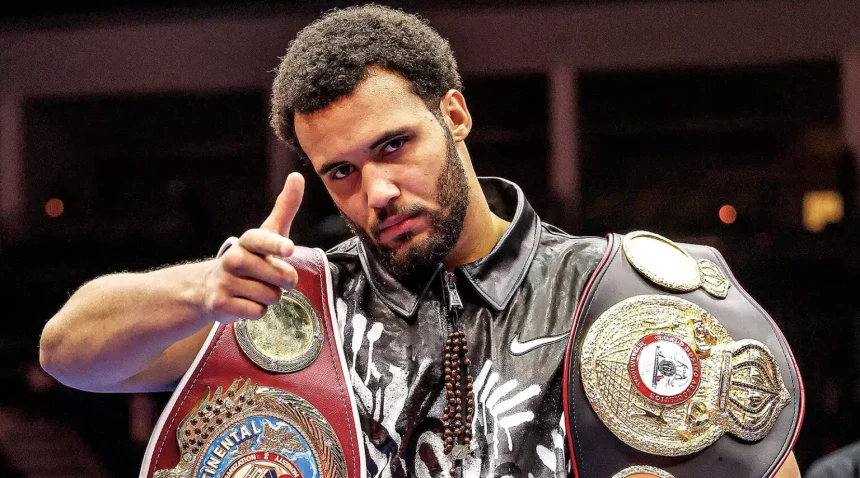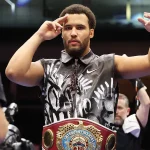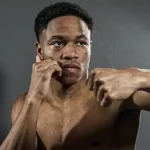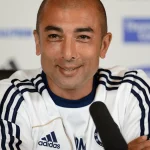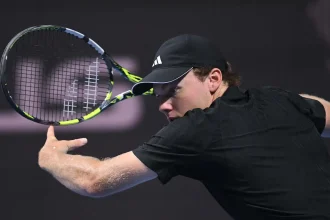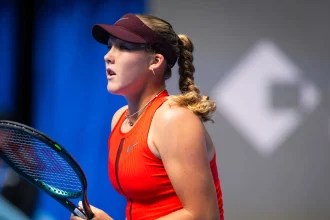Moses Itauma has hit the 13-0 milestone, with 11 of those wins coming by knockout. The 19-year-old heavyweight is making waves in the division—and his latest performance only adds to the growing buzz. Could a world title shot be in the not-so-distant future? Possibly. But how does Itauma’s rise stack up against the careers of legendary heavyweights when they too were 13 fights into their journey?
Let’s take a look at how some of boxing’s biggest names were shaping up at the same point.
Muhammad Ali (Cassius Clay)
By the time Ali reached 13 fights, he was still known as Cassius Clay. His first real test came against 26-year-old veteran Alex Miteff, a rugged pro from Argentina with a record of 24-10-1. Although Miteff had lost three of his previous four, he had gone the distance with George Chuvalo and even knocked down British champ Henry Cooper.
Ali, just 19 and fighting at home in Louisville, stopped Miteff in round six with speed and precision. His double jab-right hand combination caused severe swelling to Miteff’s eye before a final knockdown ended it.
Commentator Don Dunphy noted, “Clay was a much better fighter than most people had figured for a young fellow of only eight fights.”
Two bouts later, Ali faced hard-hitting Sonny Banks, who floored him in the first round at Madison Square Garden. But Ali rebounded quickly, outclassed Banks, and won by fourth-round TKO—offering early glimpses of his future greatness.
Joe Louis
Joe Louis tore through his first 13 opponents, winning 11 by knockout in just six months. By his 12th fight, he faced skilled veteran Lee Ramage (40-8-5), who had twice beaten former champion Maxie Rosenbloom.
Ramage outboxed Louis early, but Louis turned the tide with devastating power. In round eight, Louis dropped Ramage three times, forcing a stoppage. It was only the second time Ramage had been stopped—proof of Louis’s elite power and poise.
Mike Tyson
Tyson’s start was nothing short of electric. At just 19 years old, he racked up 13 straight knockouts in eight months. No opponent lasted beyond the fourth round.
His 13th fight saw him destroy Conroy Nelson in two rounds—Nelson had previously gone 10 rounds with Razor Ruddock. Tyson’s explosive finishes and menacing style led to major media attention, with Sport magazine dubbing him “The Next Great Heavyweight.”
ABC’s boxing consultant Alex Wallau said at the time: “At this stage, considering his number of fights and age, Tyson is probably the most advanced heavyweight ever in terms of talent, ability, and potential.”
George Foreman
While Foreman was unbeaten and scored 11 KOs in his first 13 bouts, his early performances didn’t win over the critics. In fact, the New York Times reported boos from the Madison Square Garden crowd after his debut.
He did earn a solid win over Chuck Wepner—who would later go 15 rounds with Ali—but Foreman’s early opponents were often journeymen. Fighters like Levi Forte (20-21-2) and Roberto Davila (11 losses) extended him the distance. Foreman’s power was clear, but refinement was still years away.
Joe Frazier
Frazier’s 12th bout was a dramatic 10-round decision over Oscar Bonavena, where he was knocked down twice in the second round. Any further knockdown in that round would’ve cost him the fight under New York’s three-knockdown rule.
He rebounded well, staying in close and outworking Bonavena. Two months later, Frazier stopped former contender Eddie Machen—who had recently beaten Jerry Quarry—proving his hunger to learn and his willingness to take risks early.
Lennox Lewis
Lewis, another Olympic gold medallist, had a relatively quiet start to his career. All of his first 13 opponents were considered safe, and it wasn’t until his 13th fight that he was scheduled for 10 rounds. He notched 11 KOs, but the slow build didn’t give fans much to evaluate early on.
Riddick Bowe
Like Lewis, Bowe’s early pro career was low-risk. His 13th opponent was Charles “White Lightning” Woolard, a 31-year-old journeyman with back-to-back KO losses. Bowe needed just two rounds to end it.
Wladimir Klitschko
Klitschko’s early path was even more cautious. His 13th opponent, Marcos Gonzalez, had been knocked out in five of his previous six fights. Klitschko finished him in two. All of his bouts to this point had been six- or eight-rounders, suggesting an extremely patient approach despite his Olympic pedigree.
Vitali Klitschko
Vitali’s first 13 fights followed the same conservative matchmaking model. Each win came by knockout, mostly against opponents with losing records or long histories of stoppage defeats. His 13th bout was against Anthony Willis, a former light-heavyweight, whom he stopped in the fifth.
Deontay Wilder
Wilder went 13-0 with 13 knockouts, fighting in four- and six-rounders against limited opposition. His 13th bout, however, included a scare—Harold Sconiers dropped him early, but Wilder recovered to win in the fourth.
So, How Does Moses Itauma Compare?
At 13-0 with 11 knockouts, Itauma is in good company—but what stands out is how differently his path compares to many of the all-time greats. Like Tyson and Louis, he has been active and destructive. But like Lewis and the Klitschkos, his matchmaking has leaned safe.
That said, Itauma’s technique, composure, and physical gifts continue to impress. If his development stays on track—and he takes on meaningful tests soon—he could find himself joining the ranks of those mentioned above.
For now, it’s upwards and onwards. But the real tests—and comparisons—are yet to come.


